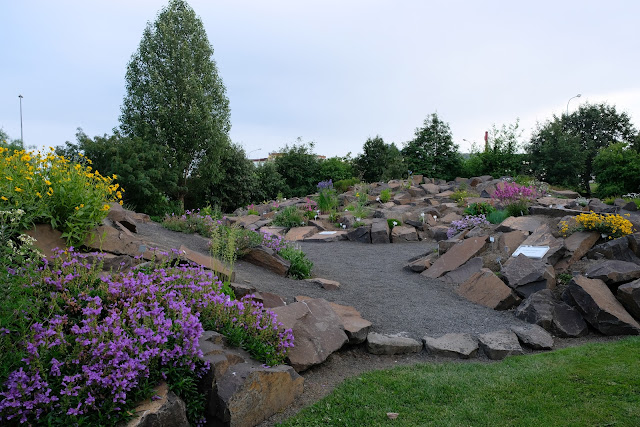We drove the ring road from Reykjavik to Akureyri on our second day in the country. Matt really wanted to go see The Settlement Center, due to his deep interest in Icelandic, Viking, Greenlandic, and Inuit cultures, and I was happy to go as well. We started with two great exhibits on how Iceland was settled, and finished with some amazingly great food from the attached restaurant. We were super lucky to get into the restaurant as they had a large group reserving the whole place that day!
Here is a great photo from the exhibit of some masks depicting Norse Gods.
After our delightful museum tour and meal, we drove up to Akureyri. It's a beach town, with an upscale beach vibe. We came for the sights around Lake Myvatn, which I'll write about in another post, yet we found some nice things to enjoy in this sleepy town as well.
We stayed in another great AirBnB, way up on a hill. It was a pleasant walk to the downtown, plus we got to stay in an upstairs guest house with one other couple from Germany, who were also driving the ring road (much more intensively than we, I might add). Travel friends are great! We found a nice restaurant by accident that first night called Strikid, and that was fortunate because not much in this town is GF friendly. Even a fast Mexican place of sorts wasn't very GF. There could be some Indian and Thai restaurants we didn't check out, so if anyone else has other recommendations let me know!
And here is a collage of some other lovely moments. It's simply too large and too beautiful to put it all in here.






Comments
Post a Comment